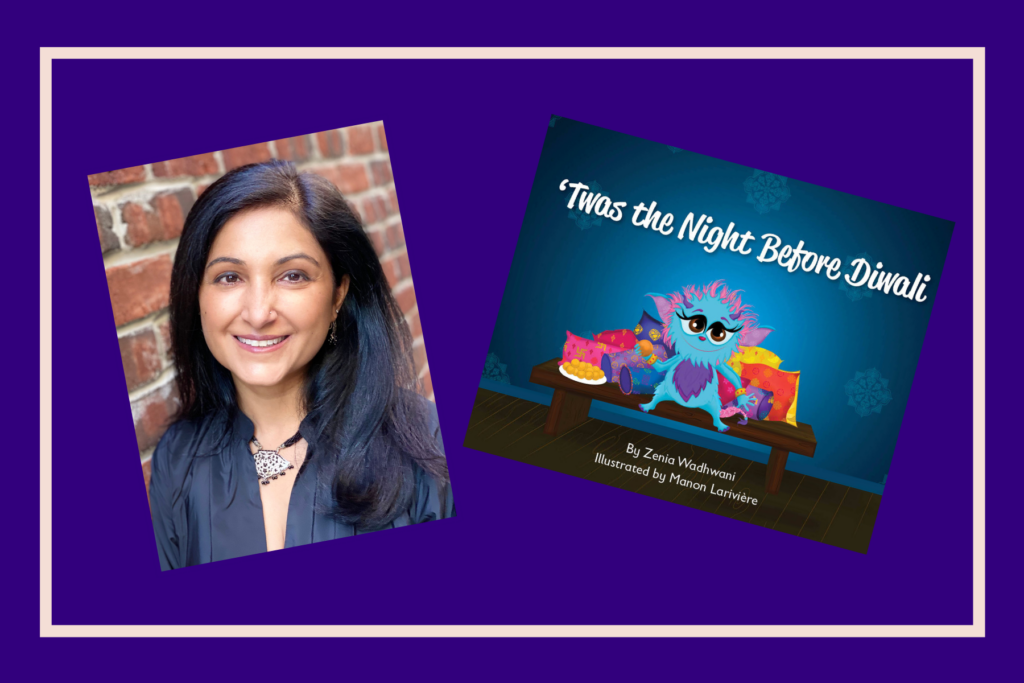
‘Twas the night before Christmas, when all thro’ the house,
Not a creature was stirring, not even a mouse
I recited that from memory.
These last few months of the year are considered “holiday seasons” for national, Christian and Jewish holidays. What many are unaware of at work when I say “I’m home for the holidays” is that really, I mean I am back home for Navratri or Diwali — Hindu holidays that are easy to overlook when national holiday calendars don’t recognize them.
As the years progress, I question things beyond media; I question national calendars, C-suite representation, advertisement representation, storytelling representation. This questioning can start young, and is a result of reckoning with our identity and an environment that makes no space for it. We need to do it ourselves.
Read Related: [Diwali During a Pandemic: A Parent’s Perspective on Creating New Traditions]
Indo-Caribbean author, Zenia Wadhwani, recently released a children’s book called “Twas the Night before Diwali.” An obvious play on “Twas the Night before Christmas,” this book weaves a tale about a young Hindu girl whose family visits to celebrate Diwali. Depicted in beautiful and colorful illustrations, the family seems to be enjoying themselves (with traditional activities like waving sparklers, decorating the house with lights and drawing rangoli) when a harmless, indulgent Mithai Monster (translation: Sweet Monster) comes to swipe some Diwali sweets. The main character befriends the Mithai Monster, or Baby Cookie Monster-meets-Sully-look-alike, by the end of the story.
The show, The Office, put Diwali on the map as a holiday with an episode in season 3 called “Diwali.” Say what you will about the cringey yet knee slapping humor of the show, but I felt somewhat validated by Kelly Kapoor’s feeble attempt at celebrating her Hindu-ness. At sixteen years old, I was shocked and thrilled at seeing some kind of nod toward my culture on national television.
I thought to myself, “Just where is our representation in media?”
Read Related: [South Asian Representation Worth Celebrating on TV in 2019]
I loved the concept of the Mithai Monster because, quite frankly, we all have a little Mithai Monster within us during this holiday.
View this post on Instagram
As a first-generation Indian American, I saw myself in the main character — chubby cheeks and braids included. I saw my home in the home in the book; paralleled experiences that warmed my heart and made me nostalgic for my younger years of celebrating Diwali. Zenia Wadhwani’s simplistic idea speaks volumes: how can we connect to our culture while also being part of the diaspora? How can we do that for our children?
I took some of my questions to the source: Zenia Wadhwani.
What or who inspired the creation of the “Mithai Monster”?
About nine years ago, I was pregnant and staring at a big tray of mithai. I playfully picked it up and pretended I was going to gobble the whole thing down. My husband took a photo and I jokingly said, “I look like a Mithai Monster!” and in that moment, I knew this was a character who had a story to tell.
What inspired you to write the Hindu version of “Twas the Night before Christmas”?
I like taking a South Asian lens to mainstream things; “demystifying” them, if you will. Maybe because growing up, I didn’t see enough of our culture in the books I read or the shows I watched. And so I just thought it might be fun to tell the Indian version of this classic poem.
What message are you hoping to deliver to your audience?
I simply wanted to write a book that was playful and entertaining. But I think the message that has come out is that while Diwali is steeped in tradition and based on stories from the ancient text, the “Ramayan,” we can create new stories and new traditions too.
Follow Zenia Wadhwani on Instagram and purchase a own copy of “‘Twas the Night Before Diwali” here!
Need inspiration on what to buy for Diwali? Check out our listicle here!




